Are you losing sales because your products are not showing up in search? Fix this problem by integrating a fashion discovery AI tool with your store!
by YesPlz.AIAugust 2025
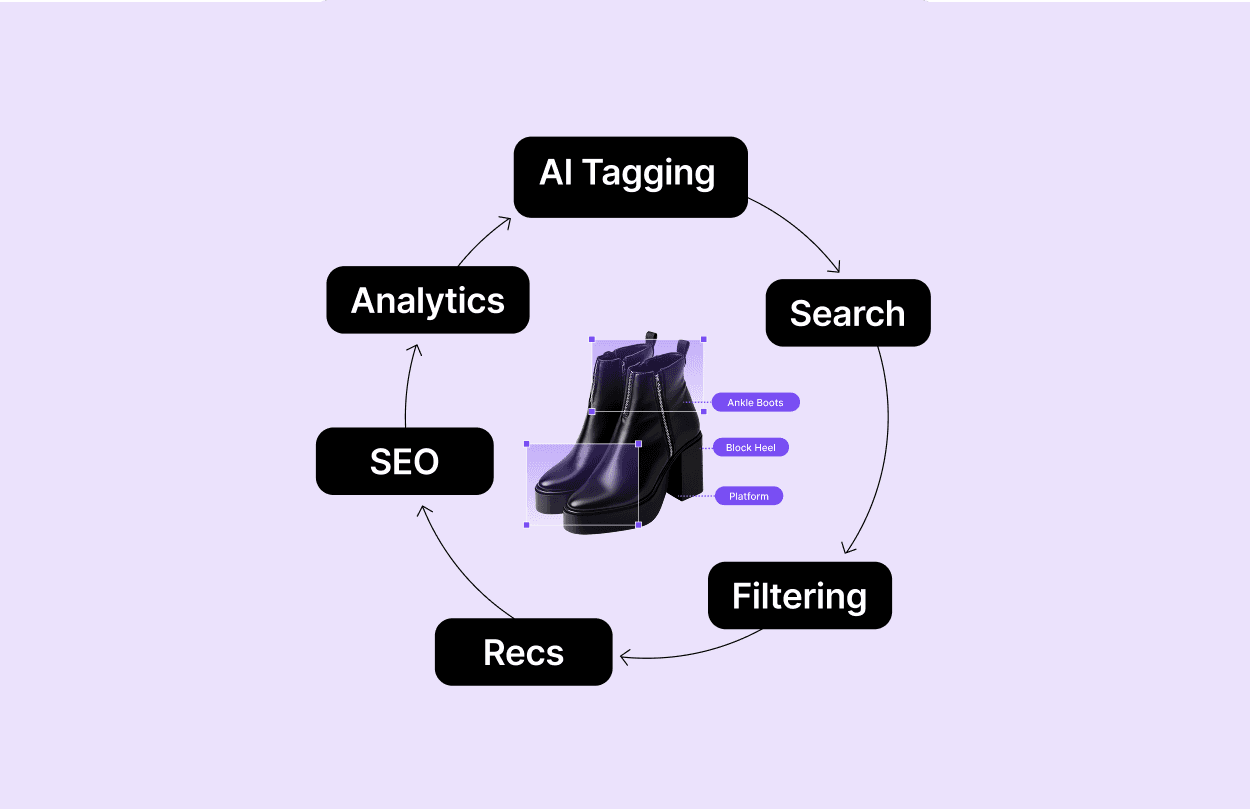
Product visibility is at the core of a fashion store. If a product cannot be seen or found, it cannot be sold.
One major pain of eCommerce managers is product discovery. Customers come to the store, and yet relevant products do not show up when they perform a search. What happens next is that the shoppers leave your store, and you do not make a sale.
What is the best course of action? What exactly is causing this problem, and how can you use fashion discovery AI to fix it?
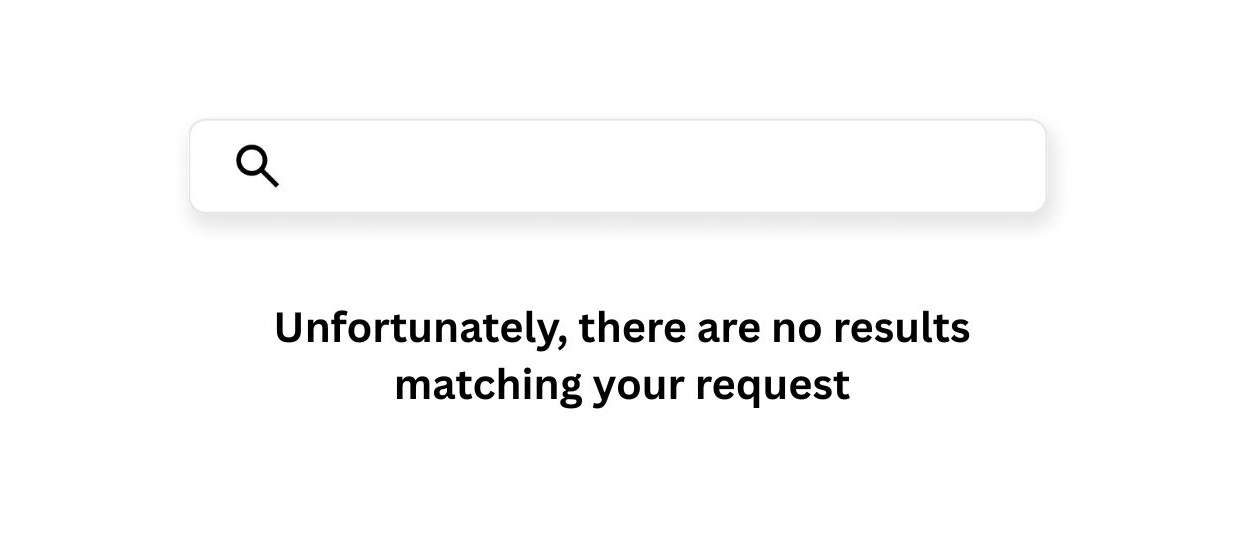 Imagine a shopper, let’s call her Daniella, looking for an off-the-shoulder top for her upcoming vacation.
Imagine a shopper, let’s call her Daniella, looking for an off-the-shoulder top for her upcoming vacation.
She lands on your website, after scrolling through your brand’s instagram, where she’s been reading glowing comments from your followers.
A savvy shopper, she uses the search bar in your store, but to her dismay, she keeps getting the “no results found” error message. She tries to use your filter options, but your store has no clickable selection for showing “necklines” only.
Lunch break is over, and she has to go back to work, so she closes the browser.
And you? You just lost a sale.
You have over 30 tops that meet her neckline requirements, all perfect for vacation, but these clothes never showed up.
Why?
Because your store does not have the capability to recognize clothing by image, let alone tag them automatically for search and filter purposes.
What if you had a tool that could enrich your product data so much that you could provide the best possible product discovery experience?
How about an analytics tool that can tell you what went wrong with a customer’s shopping journey, making it possible to take action on these opportunities?
In this article, we'll explore what product discovery essentials mean for fashion eCommerce and how you can transform your online store to meet modern shoppers’ expectations."
Before the internet existed, people went to physical shops where salesclerks offered help (they still do). These shop assistants asked customers what they’re looking for, like size, color, the occasion, etc.
The shop assistant, being an “expert” about the store’s inventory and fashion, makes some recommendations to the shopper. The shopper now has several options that match her expectations and ends up purchasing the one she likes the most.
Fashion discovery essential works in the same way. In a nutshell, it is a set of essential tools that make your products discoverable.
Going back to Daniella’s example earlier, she would have found the vacation-appropriate, off-the-shoulder top she was looking for if only your store had the right fashion AI discovery solutions.
What else can a fashion discovery AI do for you?
The conventional process for eCommerce management is to manually add keywords, product tags, category trees, and product filtering options.
Not only is this process repetitive, but it is also costly and prone to error. As fashion trends change, there is a need to go back to your products and tag them with new keywords, like Y2K, athleisure, quiet luxury, etc.
You will do this again and again, and it means more manual and ineffective work.
AI can do all this for you, freeing you from redundant but important tasks. Now, you can focus on the core of your business, which can be marketing, product creation, etc.
Most recommendation systems are based on static programs. The store will recommend a product to a shopper, even if she is not looking for that, because the system was programmed to do it.
The problem here is that the shopper sees irrelevant items, which can cause frustration, disappointment, and friction.
Fashion AI can fix this and do more. The AI has a contextual understanding of what the customer is looking for. At the very least, the AI makes it possible to recommend products based on similar style, frequently-bought-together, you-might-also-like, complete-the-look, and more.
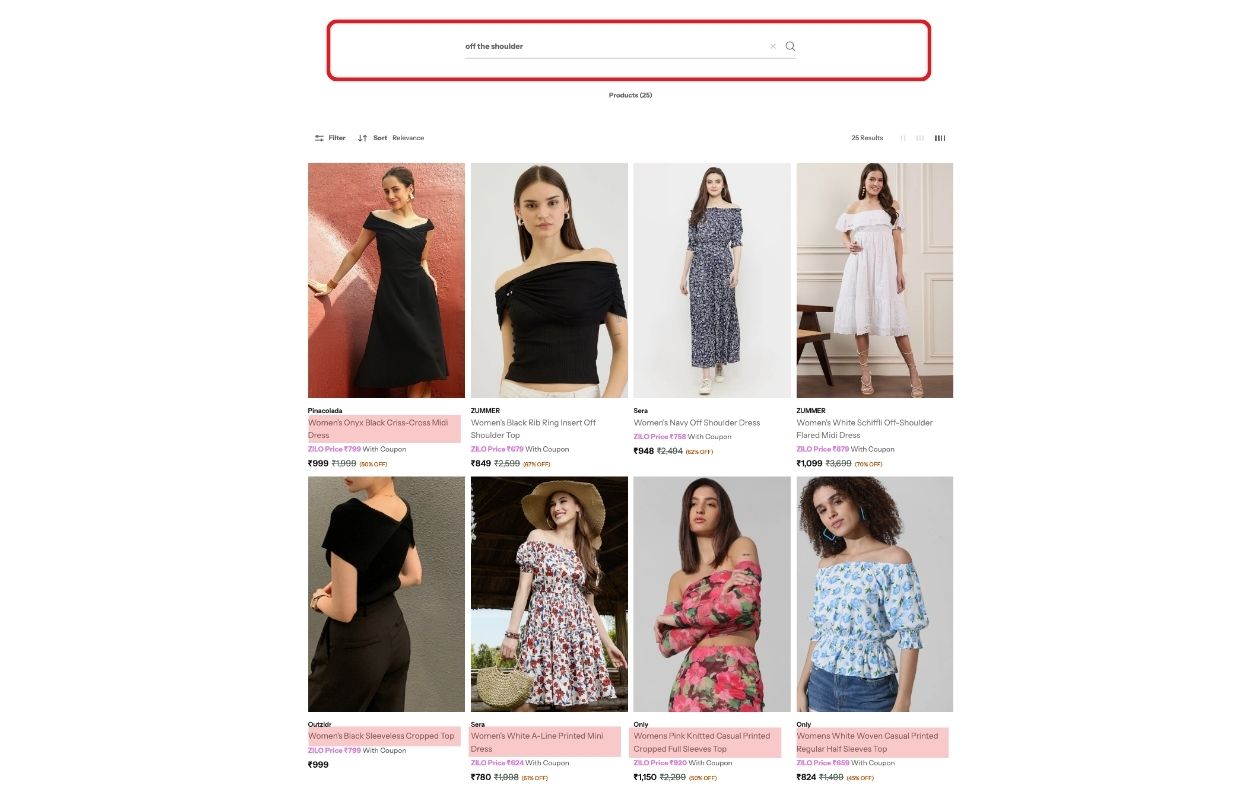 The main goal of fashion discovery is to offer a seamless experience to your shopper. The faster she finds the product, the more likely she is to make the purchase.
The main goal of fashion discovery is to offer a seamless experience to your shopper. The faster she finds the product, the more likely she is to make the purchase.
In addition, if the fashion AI has a contextual understanding of what the consumer wants, the AI can provide inspiration for a new style that matches her vacation trip. All this can happen because the AI, like a salesclerk in a physical store, analyzes what the shopper needs and reacts to it accordingly.
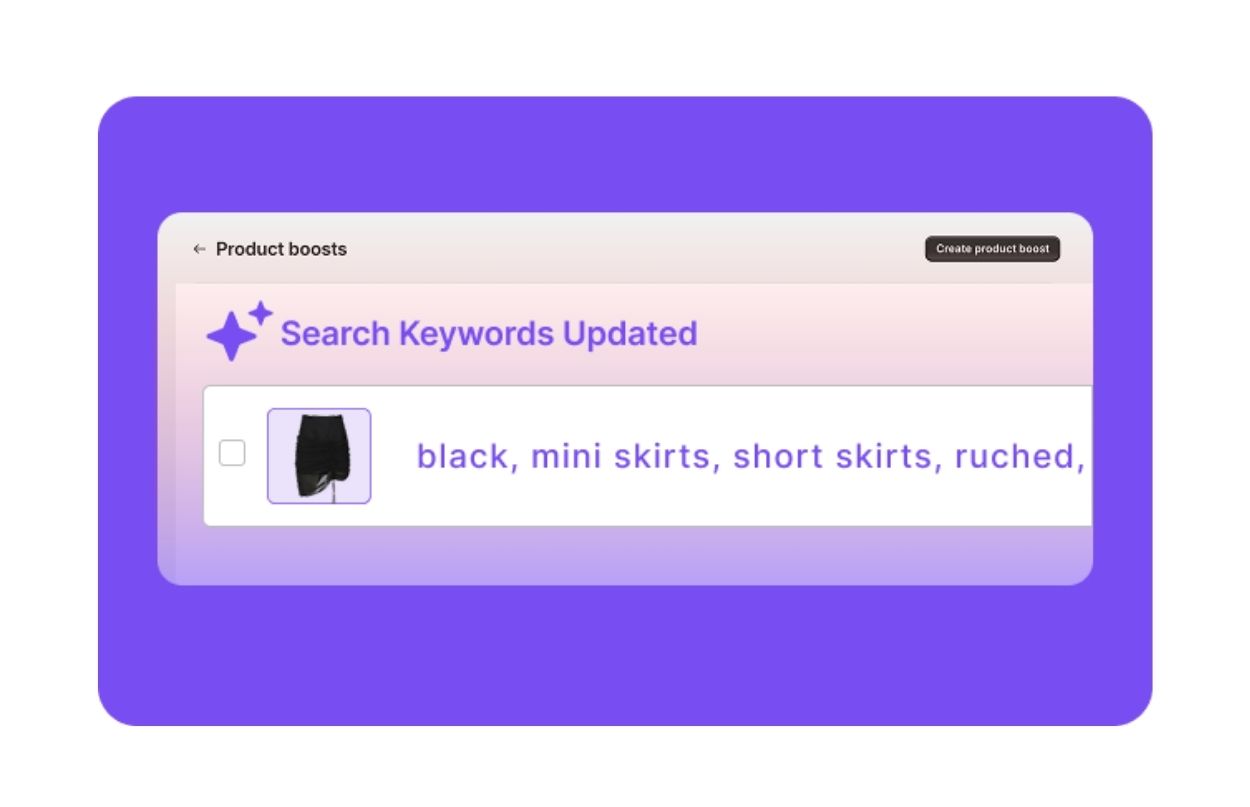 Search, one of the most important product discovery tools, poses several challenges, the most common of which are shown below:Most Common Challenges with Fashion Search:
Search, one of the most important product discovery tools, poses several challenges, the most common of which are shown below:Most Common Challenges with Fashion Search:
Inaccurate Search Results—the search engine uses a broad match configuration, making the results irrelevant.
Lack of Matching Synonyms and Typos—if a customer searches for “mini-skirt” but your product is tagged as “short skirt,” the product will not show up in the search results (same thing with misspelled words).
Missing Trendy Keywords—terms like Y2K, Barbiecore, dark academia, and other new fashion trend words must be added manually to each product.
Add to this list the lack of contextual understanding. A conventional search engine does not really understand what a customer is looking for.
So, if a shopper searches for “long sleeve tops,” she may see products that are “tops” but not long-sleeved.
All these problems will hurt your sales. It is either the shopper sees irrelevant results, or no results show at all.
Fashion AI, specifically a hybrid AI search engine built for fashion, can fix all these.
How?
The AI can recognize an image and can be taught to do the same for new fashion trends. The AI understands the concept of the image, and this technology is called image embedding.
What this means is that the AI can recognize if a product is:
Ruched
Mini-skirt
Short-skirt
Black
For date night (occasion)
And more
Now, if a shopper uses these keywords, relevant products will show up in the search results, even if they are not tagged that way.
The AI will also automatically tag products, but it does more than the customary tagging process. Conventional tagging is very basic (color, gender, etc.).
A fashion AI, however, can tag products based on:
Vibe—romantic, elegant, etc.
Occasion – sports, night out, etc.
Trends—Y2K, Goth, Vanilla Girl, etc.
Style—funnel-neck, skinny jeans, strapless, etc.
How do you benefit from all these?
For one, your products are easily discoverable, even if your labels, tags, titles, and descriptions do not match the search keywords the customer used.
Your fashion store can now keep up with trends. You no longer have to worry about outdated search terms—the AI will update these tags for you.
You can also steer away from manual keyword work. As you know, product tagging for search is a tedious task.
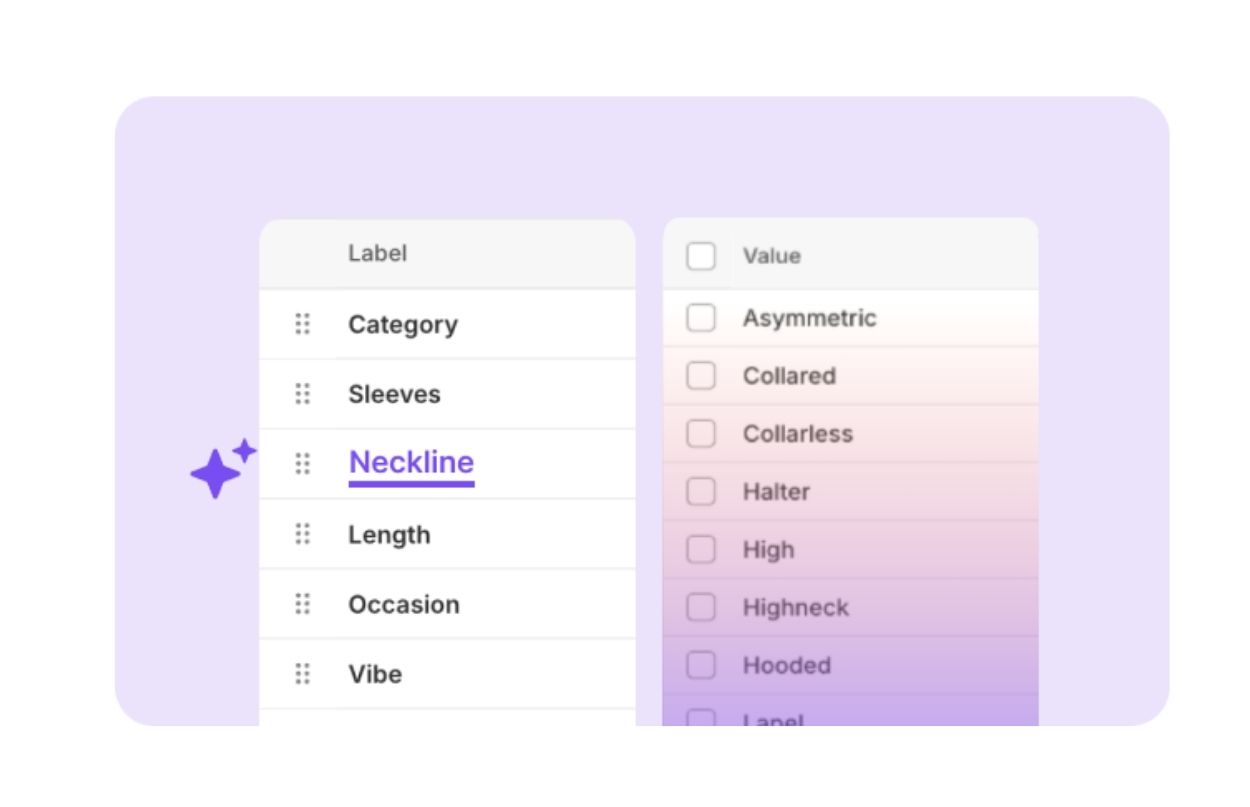 While it is easy to create filter categories, it is a nightmare to update them. It takes forever to tag products in their respective categories.
While it is easy to create filter categories, it is a nightmare to update them. It takes forever to tag products in their respective categories.
For starters, here are the most common problems with filtering:
Structure—there are so many filter categories to make, such as neckline, size, color, occasion, etc. This process is repetitive, especially if you are adding a new product line-up, like shoes.
Manual Tagging—there is a need to tag every product that matches specific filters. For example, if the product is a black dress, you need to tag it as “dress,” “woman,” “black,” etc.
Faceted Options—most filtering options are static; it is not possible for shoppers to use several filtering options, which makes it so difficult to find what they are looking for.
To enhance your filtering options, what you need is a fashion AI that provides advanced faceted filtering. A fashion AI discovery solution like this can capture not just basic but also sophisticated product properties, such as:
Pattern – checkered, stripes, etc.
Occasion – formal, vacation, etc.
Color—blue, red (plus its synonyms like navy, cyan, midnight blue, etc.)
Style—long sleeves, boatneck, etc.
Once the AI is done analyzing the products, it will automatically tag them according to their properties.
These tags will become available in the meta-fields of your store’s admin or control panel. The only thing left to do now is “activate” these filters.
How does this help your store and your shopper?
A faceted filtering function like this makes it easy for your shopper to find what she is looking for. Imagine a scenario where she ticks the following boxes:
Neckline > Halter, Boatneck
Brand > Reformation
Occasion > Date Night
Color > Black, Red
So, the customer does this and clicks on the search button. Then, your store will only show products that meet ALL these conditions.
What does that mean? If the product meets all the conditions but it is not a Reformation, then the product will not show up in the search results, therefore preventing customer dissatisfaction.
Since everything in the result page is what the customer is looking for, all she has to do now is pick the best one she likes and then proceed to check out.
Oh, and was it mentioned earlier that you do not need to do all these? The AI will do the image recognition and product tagging. If you are the eCommerce manager, you only need to choose what you want to activate in these filters!
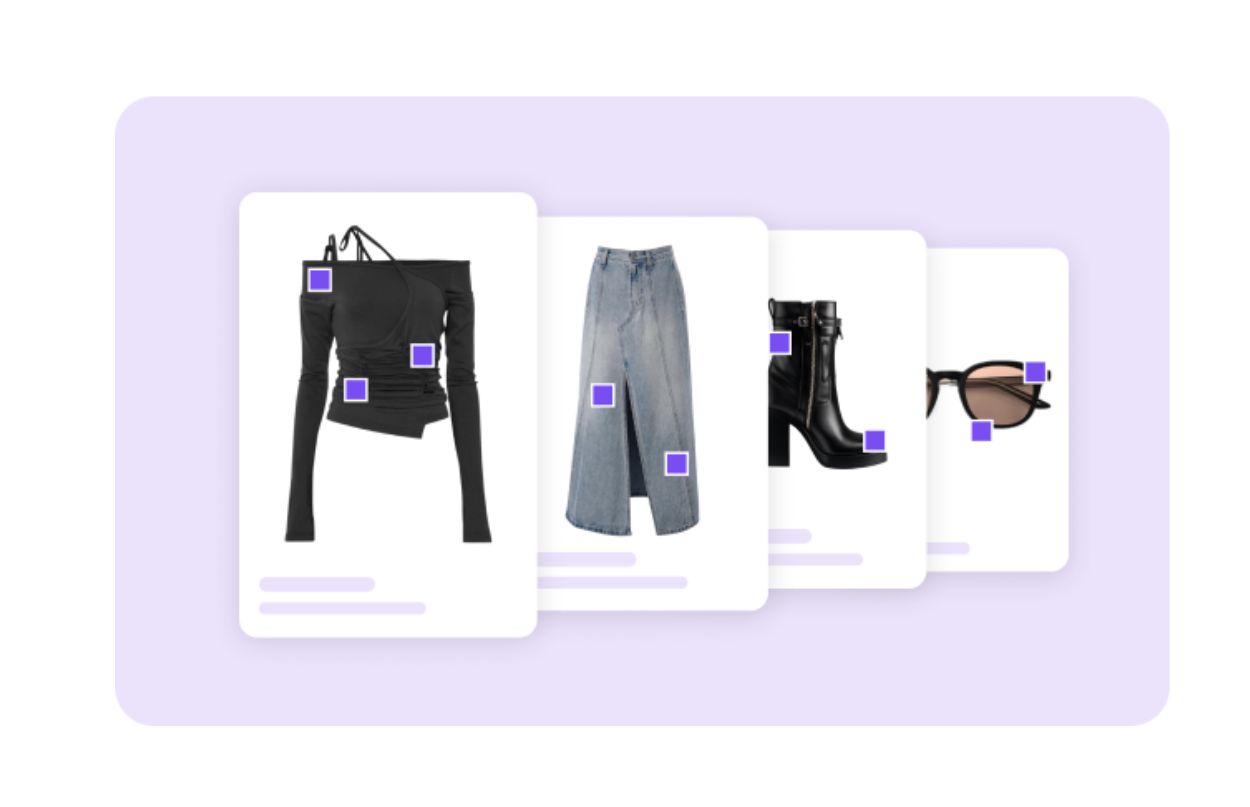 eCommerce product recommendations are mostly basic. Conventional recommendation systems are based on categories and matching some of the keywords from the product title. Or eCommerce managers manually curate the recommendations.
eCommerce product recommendations are mostly basic. Conventional recommendation systems are based on categories and matching some of the keywords from the product title. Or eCommerce managers manually curate the recommendations.
For example, if a shopper is looking at a boatneck top, the system (or store) will show all kinds of tops, including t-shirts. After all, a t-shirt is a top.
These recommendations, of course, are irrelevant, which can irk a customer.
Here are some problems with a basic recommendation system:
No Suggestions Based on Styles and Attributes—shoppers get recommended items that do not possess key characteristics they are looking for (i.e., they are looking for sneakers, but the store is suggesting leather shoes).
No Style-With Suggestions: —conventional recommendation systems cannot offer matching products (example: a pair of black pants if the customer is looking at white tops).
No Fashion Specialized Collaborative Filtering—the recommendation system has no data as to how shoppers behave, so it cannot recommend products to others who have the same shopping behavior.
No Fashion Brands Matching—many recommendation systems just offer random brands, not suggesting brands with similar fashion affinity that would help shoppers discover their next favorite brands.
So, how does a fashion discovery AI help in all these?
A fashion-focused AI recommendation system can recognize concepts from images. These concepts are not just basic ones but are highly oriented towards fashion.
In addition, the AI understands and analyzes user behavior, making it smart enough to provide recommendations that match user intent.
Here are the benefits of an AI recommendation system:
You Might Also Like—the recommendations are based on styles; if a customer is looking at boatneck shirts, the AI will only recommend boatneck shirts from your catalog.
Complete the Look—the product page will show ideal or matching products; if a shopper is looking at a cream-colored top, the AI will recommend a boho bag or a pair of flip-flops or stability sandals.
Frequently Bought Together (a.k.a Collaborative Filtering) —no need to wait to gather data about how your customers behave. This data is readily available, and the AI will make personalized recommendations according to group behavior.
Similar Brands Recommendations — the AI recognizes the brand the shopper is interested in (like Nike or Adidas), and recommends something similar (like Under Armour, Puma, or Reebok.
Brand recommendation will also improve in your store. If a shopper is browsing Nike products, the AI will recommend Adidas or Reebok if they are in your catalog. Why? All these are sports brands. In contrast, the AI will not recommend Chanel or Miu Miu because these brands are not sports-oriented.
Ultimately, a shopper will only see products that are relevant to her purpose, making it a delightful shopping experience.
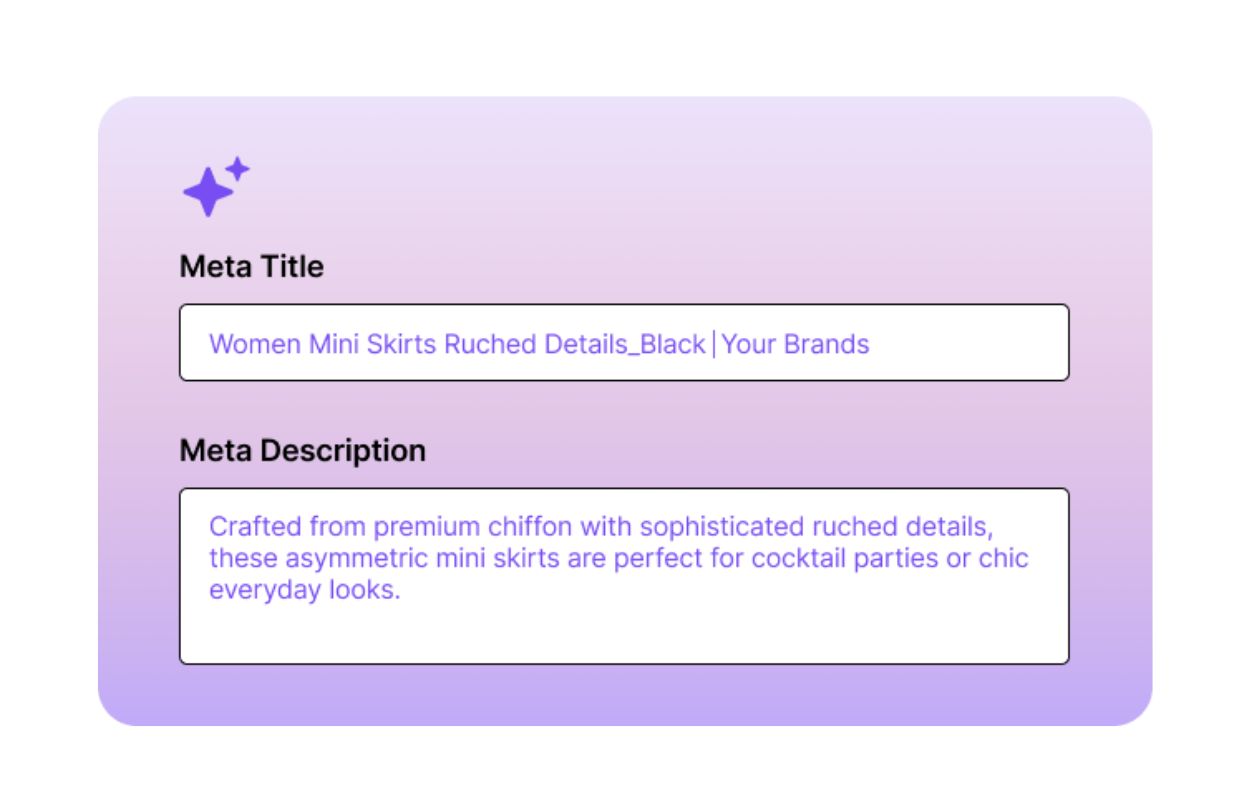 Search engine optimization is a basic expectation in running any website. Without it, your content will drown beneath millions of webpages.
Search engine optimization is a basic expectation in running any website. Without it, your content will drown beneath millions of webpages.
But then, having SEO does not mean your content will rise to the top of search engine result pages. Why?
Here are some common problems with fashion SEO:
Generic Terms—most people, and SEO tools, who create SEO for product titles, meta-tags, meta-descriptions, and product details, have little awareness of how the world of fashion works. As such, the words they use are generic.
Noise and Irrelevance—those who write SEO keywords may use noise words, or words that have nothing to do with the product itself. Because of this, the product’s strong or unique features do not get highlighted.
As a result, your product pages are not likely to see the light of day, much less get clicked in search engine results pages.
So, what does a fashion SEO AI do, and how does it help?
Since the fashion AI can recognize the concept of an image, it can also generate words that matter. These are image-driven meta titles, product descriptions, and meta descriptions.
What happens next is you get a product copy that:
Is rich in relevant details about the product
Highlights the uniqueness of the product
Keeps up with new and trendy keywords that shoppers use and understand.
Is reasonably discoverable by search engines
A fashion discovery AI analyzes a product image and then automates tagging for your products, thereby reducing manual labor.
Since the SEO keywords are relevant and unique, your product pages become well structured and more Google-friendly, not just in Google Search but also in Google Shopping.
Furthermore, with YesPlz, the keywords that the AI generates are a hybrid of both image-driven text and user reviews.
What does "user review" mean? The AI analyzes the product reviews from users, and it aggregates words that are relevant not just to that product but also to potential buyers.
Since the AI is fashion-specialized, it can detect words that are fashion-oriented, like "ruched," "chiffon," "Y2k," etc., and use these words in your product titles and descriptions.
The result? You will have an automated SEO process, not a manual one. In addition, your store will have chances at ranking, making your products highly visible to shoppers.
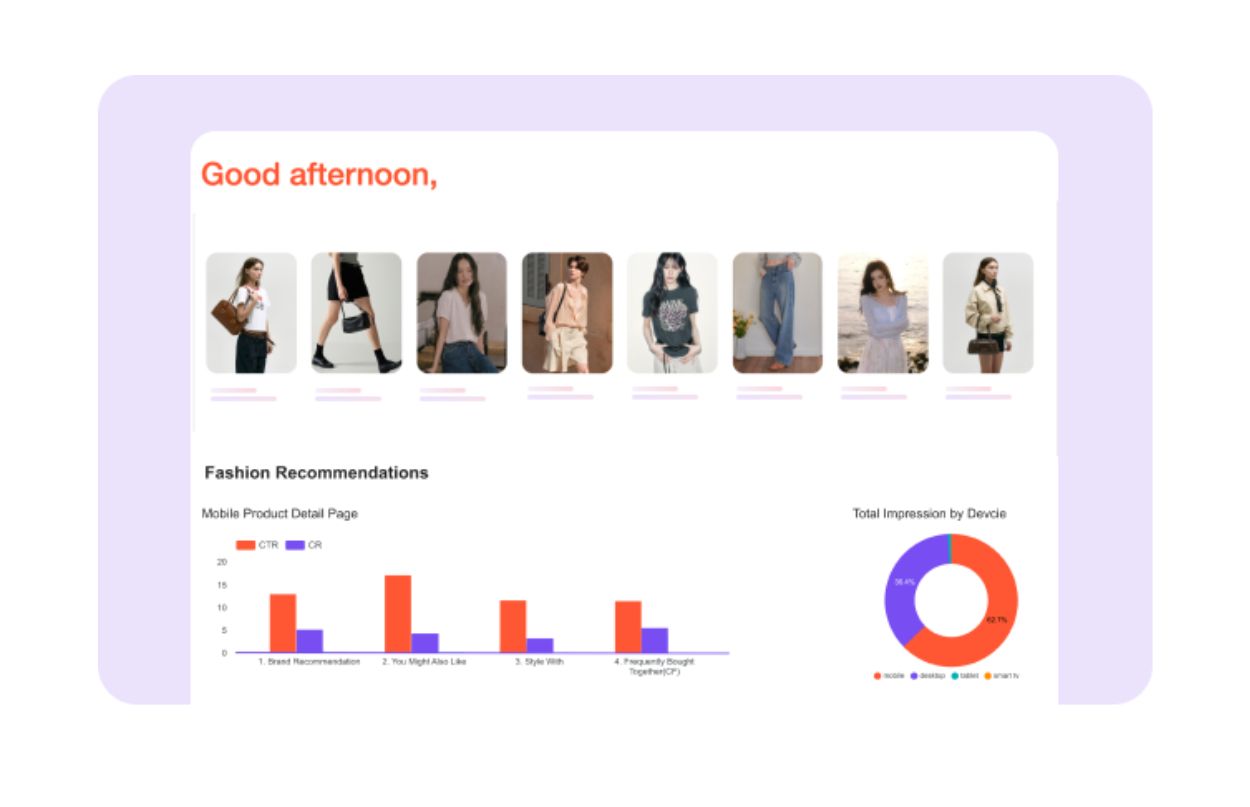 Every step a shopper takes on a website is part of the sales funnel. The problem is that some parts of the funnel are broken, redundant, or completely unnecessary.
Every step a shopper takes on a website is part of the sales funnel. The problem is that some parts of the funnel are broken, redundant, or completely unnecessary.
But how do you know which one works and which one doesn’t? While you can integrate your eCommerce fashion store with Google Analytics, the reports you get are either generic or are too complicated.
Here are a few problems you may experience from lack of analytical data:
You have no visibility on your conversion rate or click-through-rate per category, device, etc.
You do not know where and which product discovery solutions performs well
You cannot make effective business decisions because you have no data-driven reports
You will likely resort to a third-party application that does nothing but analytics. While this works, it also entails added operational cost, and it is unlikely that you can customize the reports.
YesPlz offers product discovery specialized analytics designed for the fashion eCommerce. It can help you track CTR, conversion, and other metrics across multiple parameters, which leads to making better business decisions.
How do you benefit from this?
With visibility into where and why conversions drop, you can take targeted, strategic actions to optimize your business.
For example, if analytics show your shopping cart has a high bounce rate, you can uncover:
Ineffective product discovery – shoppers may not be finding relevant or complementary items.
Missed personalization opportunities – patterns like mixed sizes, styles, or genders may indicate a shopper is buying for multiple family members or gifting.
Behavioral gaps – tracking abandoned items can highlight pricing, sizing, or style concerns.
Armed with these insights, you can refine your product discovery experience such as adding personalized cart recommendations that help shoppers quickly find items for family members, boosting both order value and conversion rates.
From search to filtering, recommendations, SEO, and actionable analytics, AI can help you easily improve your essential product discovery experience
More importantly, your shoppers will have a seamless experience navigating your site, making it easier to find what they are looking for, which also increases your conversion rates.
Interested? Schedule a discovery call with us to learn more or watch a demo!

Written by YesPlz.AI
We build the next gen visual search & recommendation for online fashion retailers
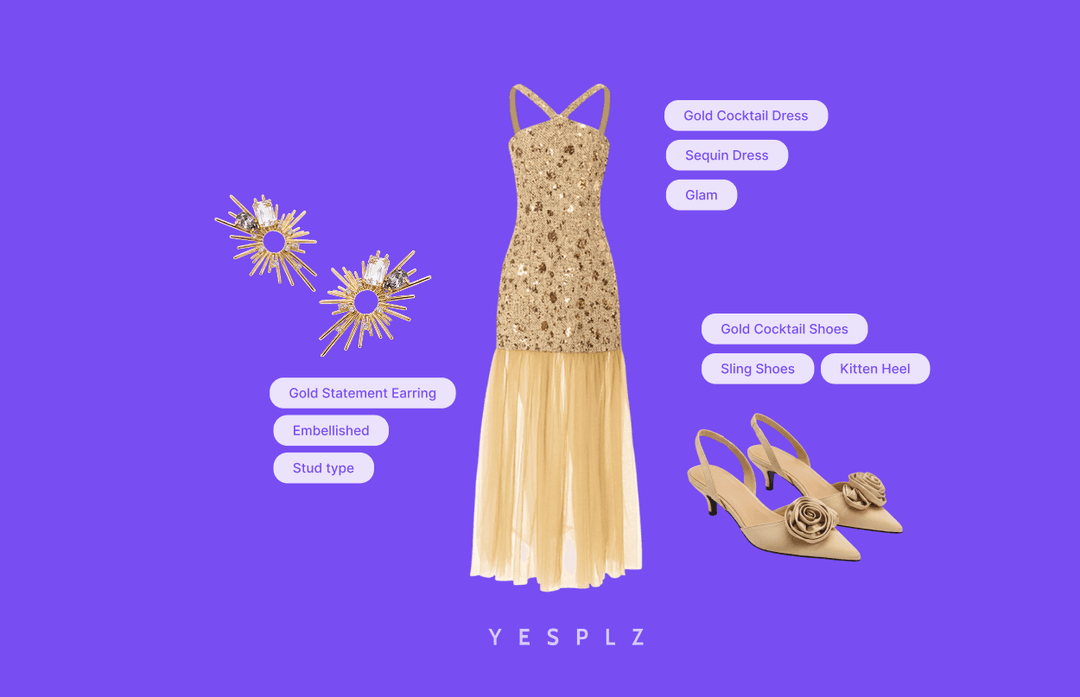
What are product tags used for? It’s a solution to low search CTR, limited filtering, manual collection curations, and more. Discover 6 essential use cases of product tags to transform search, filtering, SEO, and collections to boost sales.
by YesPlz.AI
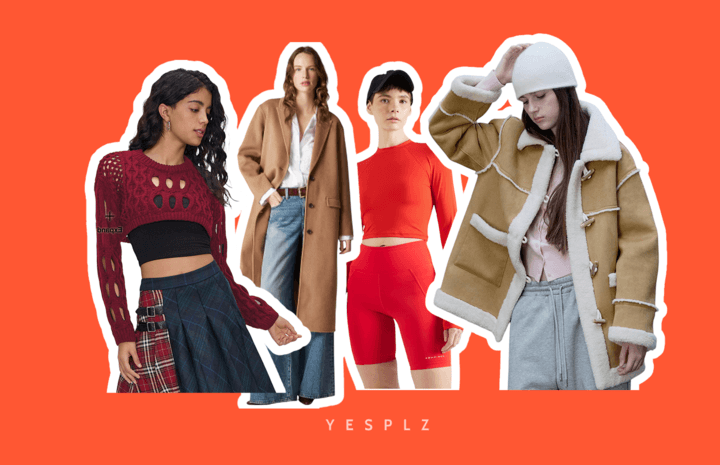
Discover 4 proven fashion recommendation strategies that boost conversions. Learn how About You, J.Crew, W Concept, and Cider drive sales.
by YesPlz.AI